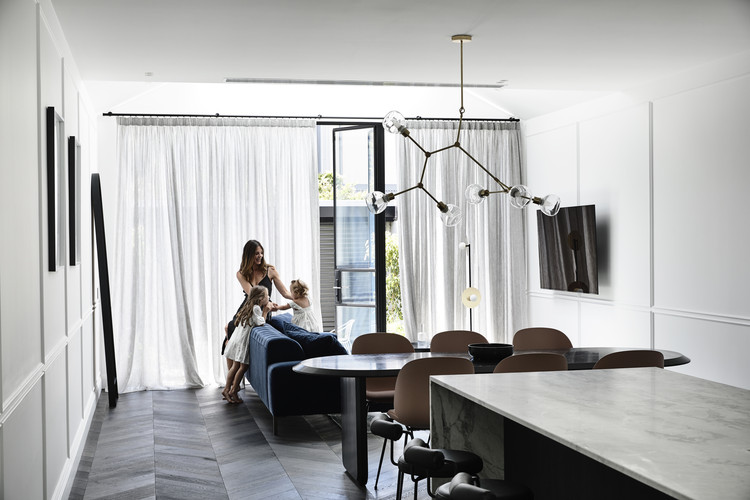Juvenile Detention Educational Facility Combas Architectes
2017-10-30 09:00
© Javier Callejas
.Javier Callejas


架构师提供的文本描述。在安全要求往往优先于室内空间质量的情况下,未成年人教育拘留中心的这一项目的灵感来自一种强烈的愿望,即创建一个抵消点,例如,使围栏消失,以便将年轻人的视野打开到一个新的视野。
Text description provided by the architects. In the kind of context where security requirements often take precedence over the quality of interior spaces, this project for an educational detention center for minors was inspired by a strong desire to create a counterpoint, in example, to make the enclosure disappear in order to open the view of the young occupants onto a new horizon.
© Javier Callejas
.Javier Callejas


2013年,司法部提出了一项提案,要求设计和建造一个新的青少年教育拘留中心,目的是将监狱政策更多地放在预防而不是镇压上。
In 2013, the Ministry of Justice issued a request for proposals to design and build a new juvenile educational detention center, aimed at focusing penitentiary policy more on prevention than on repression.
© Javier Callejas
.Javier Callejas


Floor Plan


© Javier Callejas
.Javier Callejas


这座新的建筑群是由康巴斯建筑事务所设想的,它形成了一个大的U形,用来招待一楼的孩子,以一种温暖而又封闭的形式。在入口处,一个入口首先打开,通往由一棵古老的灰树遮荫的第一个庭院,在建筑物的南侧,一个果园恢复了这个地产的农业特性,它以前是马赛北部社区的一名卡车农场主。
The new complex, imagined by the COMBAS architecture office, formed a large U-shape, designed to host the children on the ground floor, in a warm and enveloping form. At the entrance, a portal opens first onto the first courtyard shaded by an ancient ash tree, on the south side of the building, an orchard revives the agricultural identity of this property formerly run as a truck farmer of the northern neighborhoods of Marseille.
© Javier Callejas
.Javier Callejas


面对它的花园,屋顶像两个L形一样聚集在一起,似乎是从建筑物的一个角落转到一个天井上,露台上有一个像修道院一样的洞口。这一安排为年轻的居住者提供舒适的阴凉处,并能畅通无阻地俯瞰这座城市。
Facing its garden, the roofs come together like two L shapes, which seem to have pivoted from a corner of the building to open onto a patio with pierced opening resembling a cloister. This arrangement offers young occupants comforting shade and an unobstructed view over the city.
© Javier Callejas
.Javier Callejas


在地中海传统中,所有从外部切割出来的外墙都是用实心石制成的,而由板状结构的混凝土制成的内墙则是暴露在外的。在走廊上也可以看到木模的痕迹。使用粗糙的材料可以相互作用的清醒和剥离的外观,以提供一个温暖和有力的教育环境。
All the façades, which are cut out from the exterior, are made of solid stone in the Mediterranean tradition, whereas the inside walls made of board-formed textured concrete are left exposed. Traces of the wood formwork are also visible in the hallway. The use of rough materials allows for the interplay of sobriety and a stripped down look to provide a warm and robust educational context.
© Javier Callejas
.Javier Callejas


































































Architects Combas Architectes
Location Marseille, France
Area 2450.0 m2
Project Year 2017
Photographs Javier Callejas, Palmyre Roigt
Category Other Facilities
Manufacturers Loading...
























